Genome-wide identification and expression analysis of GRAS gene family in Eucalyptus grandis
- PMID: 38890621
- PMCID: PMC11184746
- DOI: 10.1186/s12870-024-05288-x
Genome-wide identification and expression analysis of GRAS gene family in Eucalyptus grandis
Abstract
Background: The GRAS gene family is a class of plant-specific transcription factors with important roles in many biological processes, such as signal transduction, disease resistance and stress tolerance, plant growth and development. So far, no information available describes the functions of the GRAS genes in Eucalyptus grandis.
Results: A total of 82 GRAS genes were identified with amino acid lengths ranging from 267 to 817 aa, and most EgrGRAS genes had one exon. Members of the GRAS gene family of Eucalyptus grandis are divided into 9 subfamilies with different protein structures, while members of the same subfamily have similar gene structures and conserved motifs. Moreover, these EgrGRAS genes expanded primarily due to segmental duplication. In addition, cis-acting element analysis showed that this family of genes was involved involved in the signal transduction of various plant hormones, growth and development, and stress response. The qRT-PCR data indicated that 18 EgrGRAS genes significantly responded to hormonal and abiotic stresses. Among them, the expression of EgrGRAS13, EgrGRAS68 and EgrGRAS55 genes was significantly up-regulated during the treatment period, and it was hypothesised that members of the EgrGRAS family play an important role in stress tolerance.
Conclusions: In this study, the phylogenetic relationship, conserved domains, cis-elements and expression patterns of GRAS gene family of Eucalyptus grandis were analyzed, which filled the gap in the identification of GRAS gene family of Eucalyptus grandis and laid the foundation for analyzing the function of EgrGRAS gene in hormone and stress response.
Keywords: Abiotic stress; Eucalyptus grandis; GRAS family; Genome-wide analysis; Phytohormone.
© 2024. The Author(s).
Conflict of interest statement
The authors declare no competing interests.
The authors declare no conflict of interest.
Figures
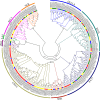
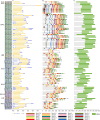

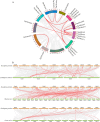
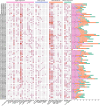
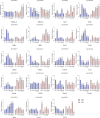
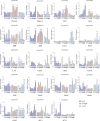
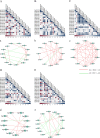
Similar articles
-
Genome-wide identification and expression analysis of GRAS transcription factors under cold stress in diploid and triploid Eucalyptus.Front Genet. 2025 Jan 29;16:1436285. doi: 10.3389/fgene.2025.1436285. eCollection 2025. Front Genet. 2025. PMID: 39944594 Free PMC article.
-
Genome-wide analysis of Eucalyptus grandis WRKY genes family and their expression profiling in response to hormone and abiotic stress treatment.Gene. 2018 Dec 15;678:38-48. doi: 10.1016/j.gene.2018.08.003. Epub 2018 Aug 2. Gene. 2018. PMID: 30077764
-
Genome-wide identification and expression analysis of the GRAS gene family under abiotic stresses in wheat (Triticum aestivum L.).Sci Rep. 2023 Oct 31;13(1):18705. doi: 10.1038/s41598-023-45051-0. Sci Rep. 2023. PMID: 37907517 Free PMC article.
-
Expression and roles of GRAS gene family in plant growth, signal transduction, biotic and abiotic stress resistance and symbiosis formation-a review.Plant Biol (Stuttg). 2022 Apr;24(3):404-416. doi: 10.1111/plb.13364. Epub 2021 Dec 1. Plant Biol (Stuttg). 2022. PMID: 34854195 Review.
-
Plant GRAS and metazoan STATs: one family?Bioessays. 2000 Jun;22(6):573-7. doi: 10.1002/(SICI)1521-1878(200006)22:6<573::AID-BIES10>3.0.CO;2-H. Bioessays. 2000. PMID: 10842311 Review.
Cited by
-
Identification of two new GRAS transcription factors and expression analysis of these genes in Chenopodium quinoa.Front Plant Sci. 2025 Jul 18;16:1579338. doi: 10.3389/fpls.2025.1579338. eCollection 2025. Front Plant Sci. 2025. PMID: 40755825 Free PMC article.
-
Genome-wide identification and functional analysis of the GRAS gene family in Medicago lupulina L.BMC Genomics. 2025 Jul 21;26(1):682. doi: 10.1186/s12864-025-11855-9. BMC Genomics. 2025. PMID: 40691755 Free PMC article.
-
Genome-Wide Identification, Expression, and Protein Interaction of GRAS Family Genes During Arbuscular Mycorrhizal Symbiosis in Poncirus trifoliata.Int J Mol Sci. 2025 Feb 27;26(5):2082. doi: 10.3390/ijms26052082. Int J Mol Sci. 2025. PMID: 40076705 Free PMC article.
-
Identification and characterization of nine PAT1 genes subfamily in Medicago edgeworthii.Plant Signal Behav. 2025 Dec;20(1):2527380. doi: 10.1080/15592324.2025.2527380. Epub 2025 Jul 1. Plant Signal Behav. 2025. PMID: 40592482 Free PMC article.
-
Genome-wide characterization of GRAS gene family and their expression profiles under diverse biotic and abiotic stresses in Amorphophallus konjac.BMC Genomics. 2025 Jul 8;26(1):643. doi: 10.1186/s12864-025-11777-6. BMC Genomics. 2025. PMID: 40629278 Free PMC article.
References
-
- Peng J, Carol P, Fau - Richards DE. Richards De Fau - King KE, King Ke Fau - Cowling RJ, Cowling Rj Fau - Murphy GP, Murphy Gp Fau - Harberd NP, Harberd NP: the Arabidopsis GAI gene defines a signaling pathway that negatively regulates gibberellin responses. Genes Dev. 1997;11(23):3194–205. doi: 10.1101/gad.11.23.3194. - DOI - PMC - PubMed
-
- Di Laurenzio L, Wysocka-Diller J, Fau - Malamy JE, Malamy Je Fau . Pysh L, Pysh L, Fau - Helariutta Y, Helariutta Y, Fau - Freshour G, Freshour G. Fau - Hahn MG, Hahn mg Fau - Feldmann KA, Feldmann Ka Fau - Benfey PN, Benfey PN: the SCARECROW gene regulates an asymmetric cell division that is essential for generating the radial organization of the Arabidopsis root. Cell. 1996;86(3):423–33. doi: 10.1016/S0092-8674(00)80115-4. - DOI - PubMed
MeSH terms
Substances
Grants and funding
- 2022YFD2200203/the National Key Research and Development Program of China during the 14th five-year plan Period
- 2022YFD2200203/the National Key Research and Development Program of China during the 14th five-year plan Period
- 2022YFD2200203/the National Key Research and Development Program of China during the 14th five-year plan Period
- 2022YFD2200203/the National Key Research and Development Program of China during the 14th five-year plan Period
- 2022YFD2200203/the National Key Research and Development Program of China during the 14th five-year plan Period
LinkOut - more resources
Full Text Sources
Miscellaneous

